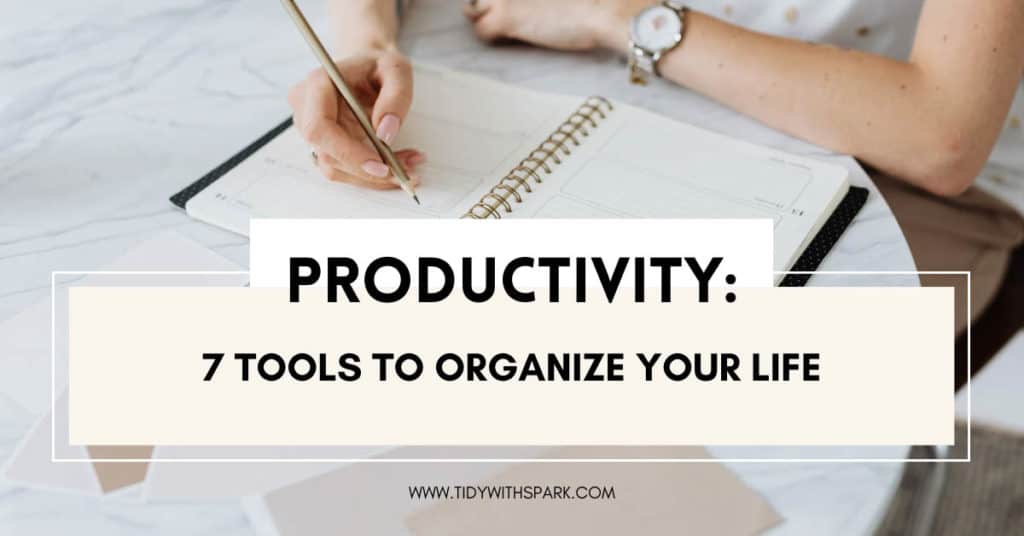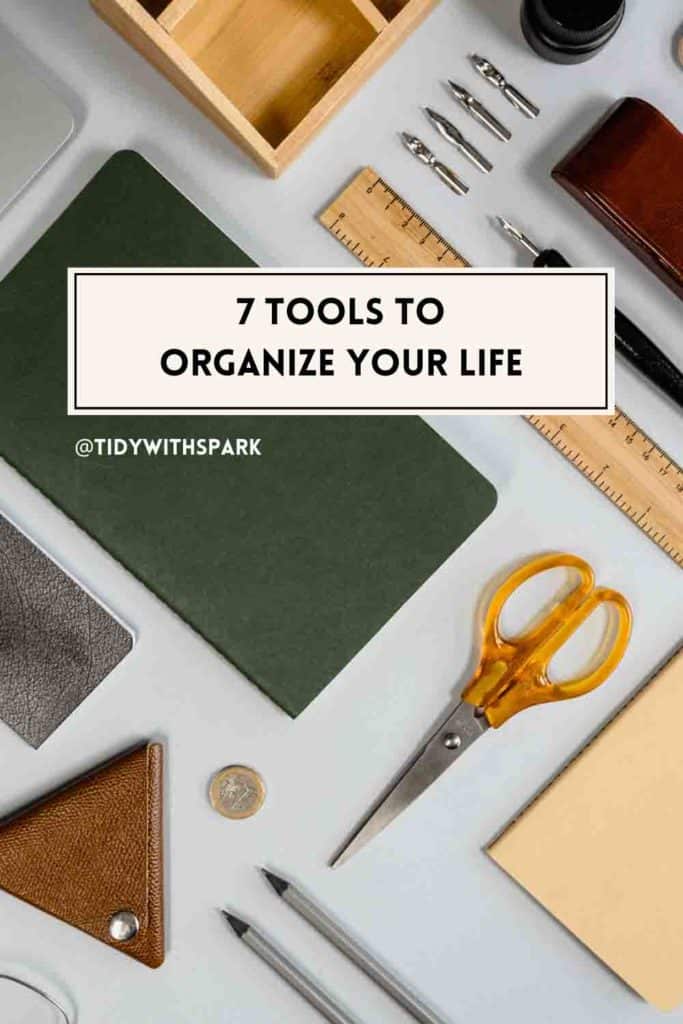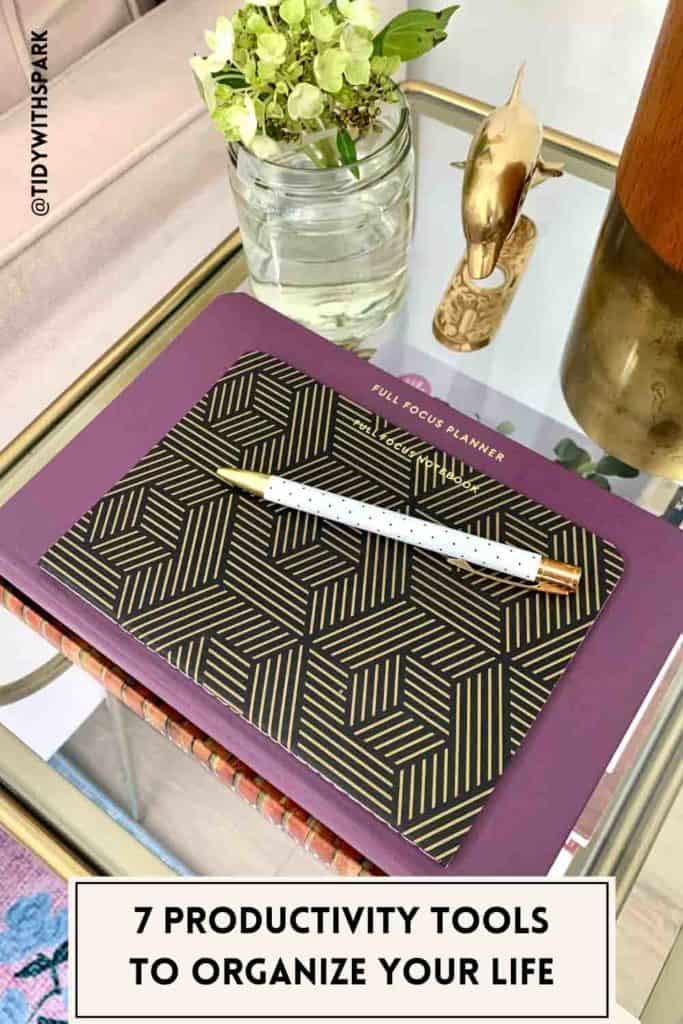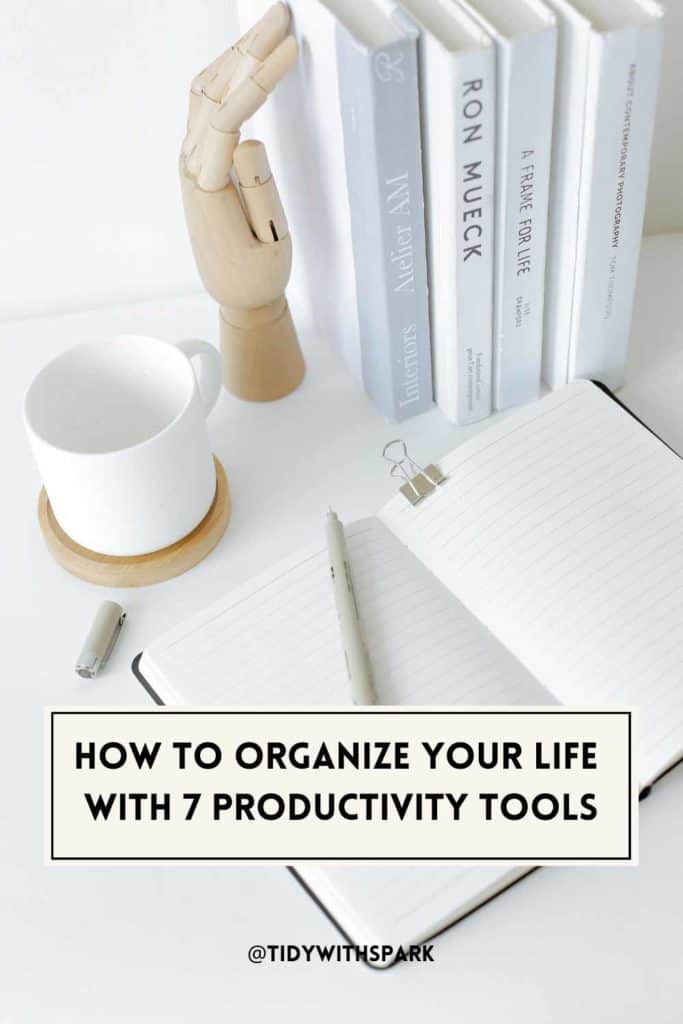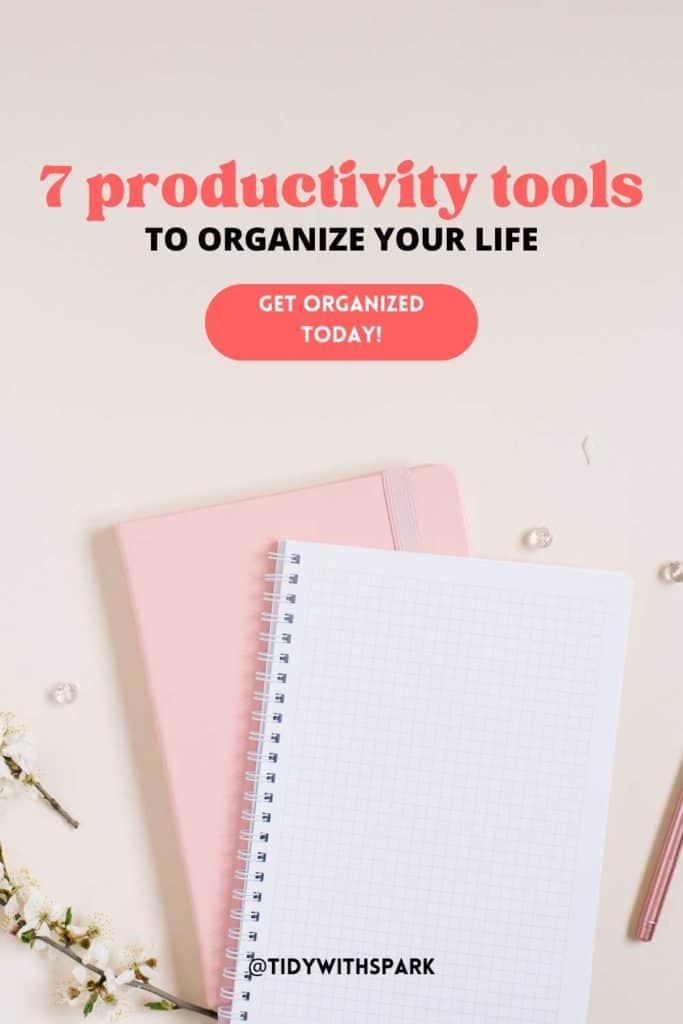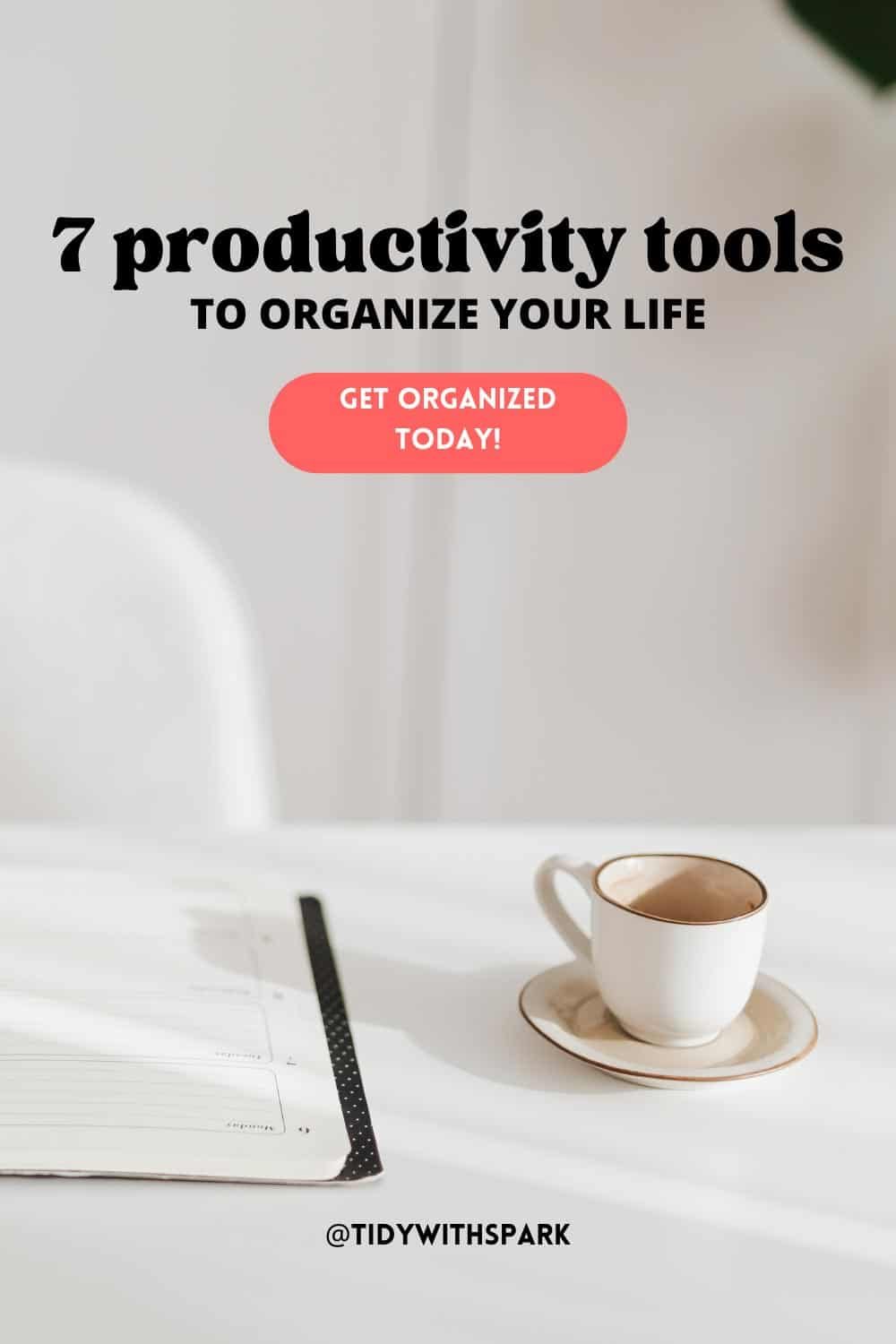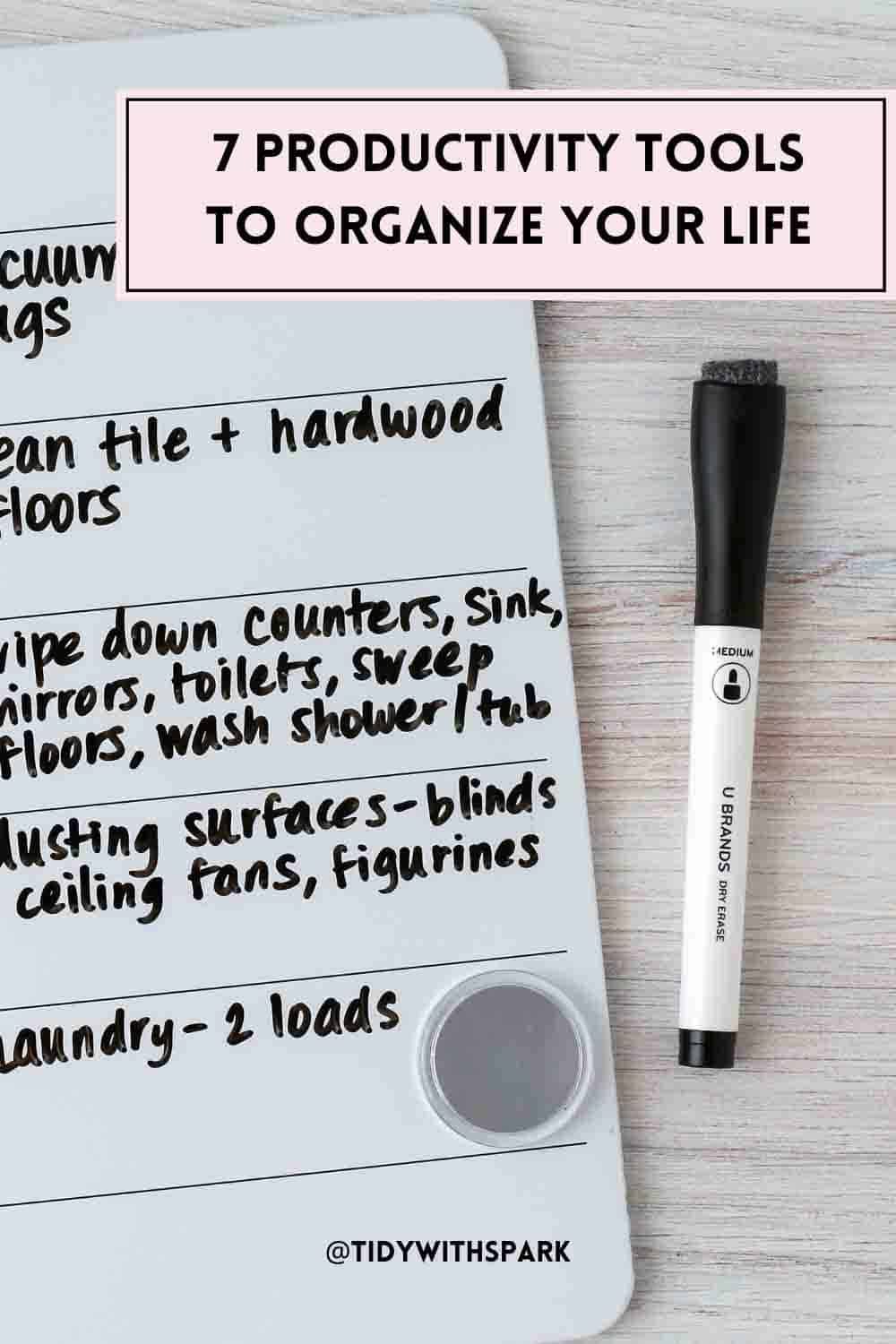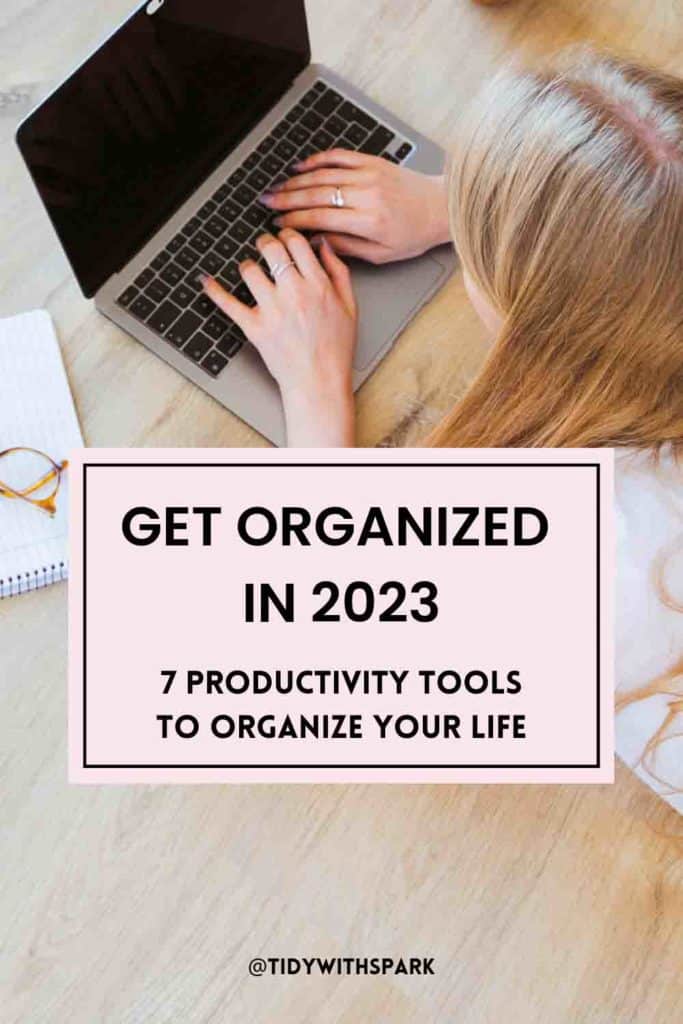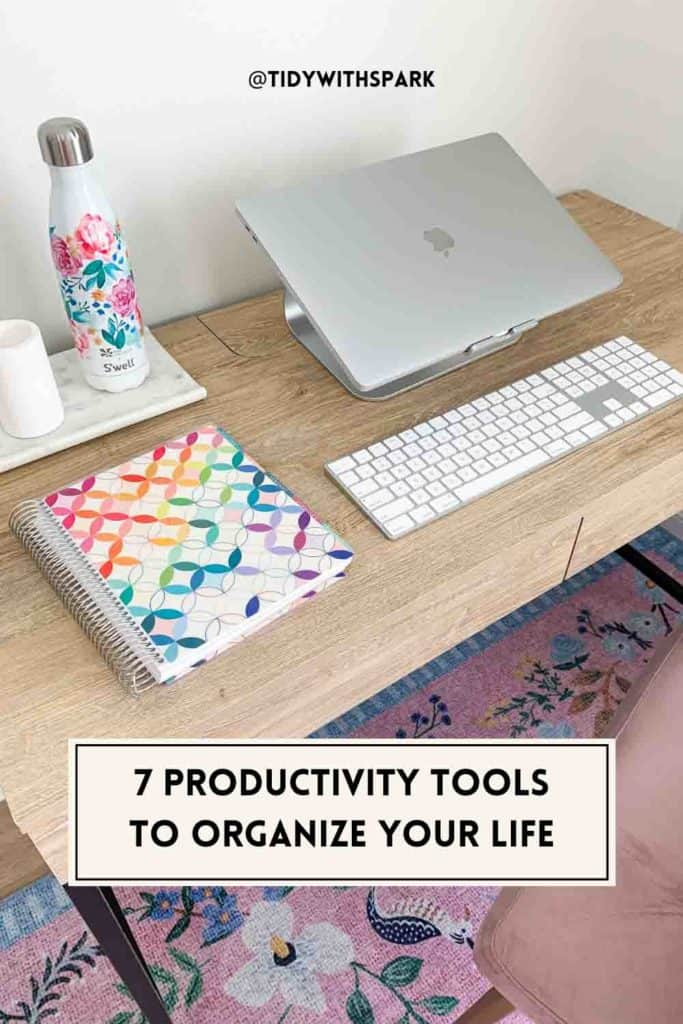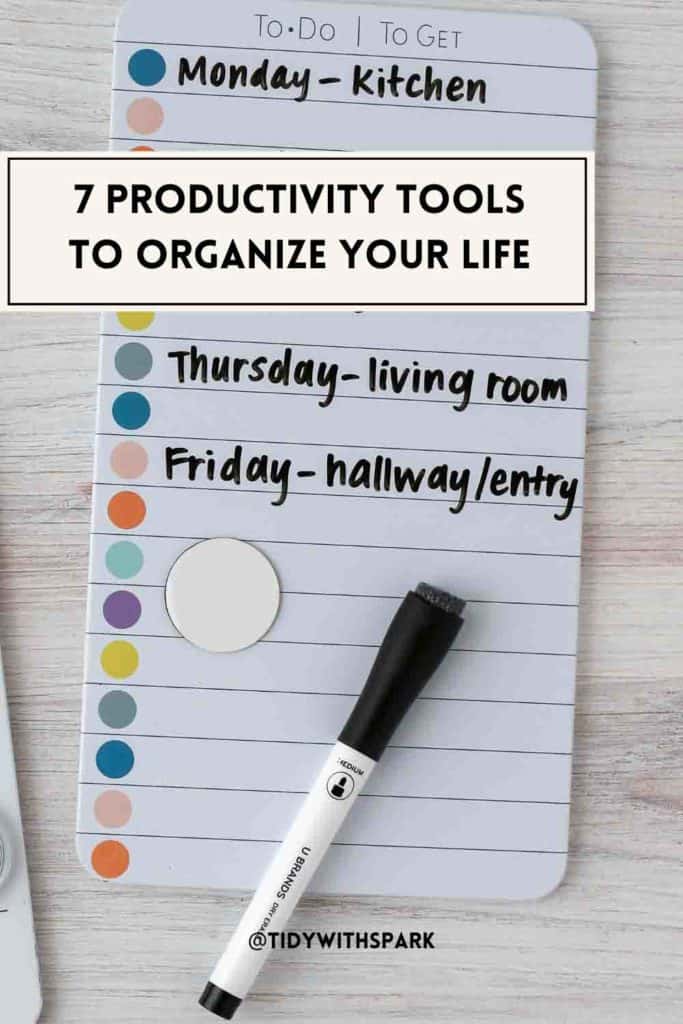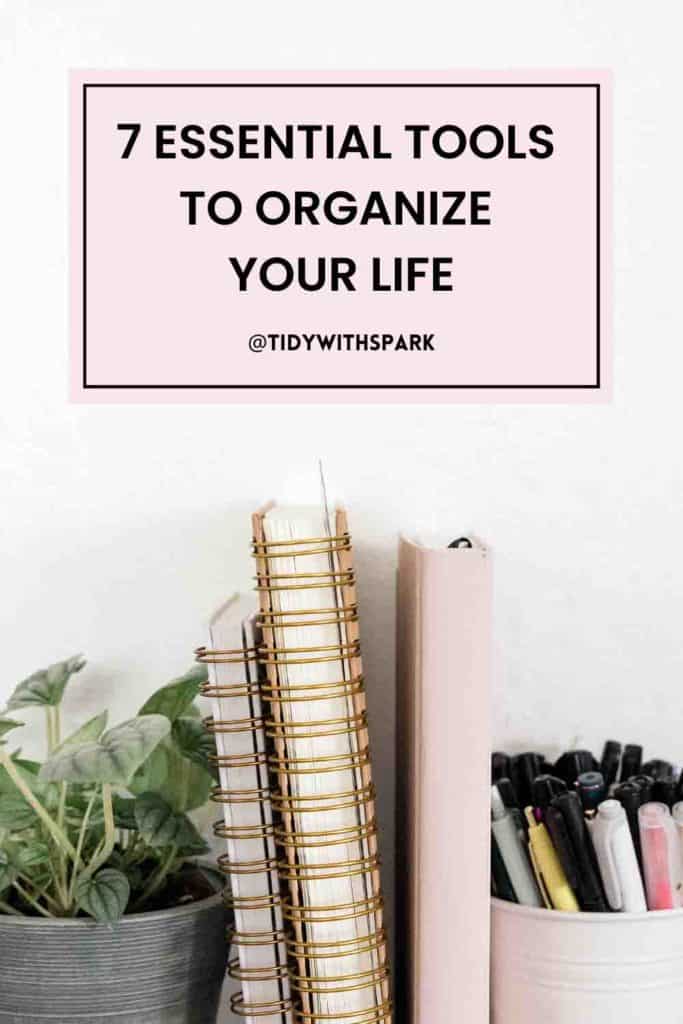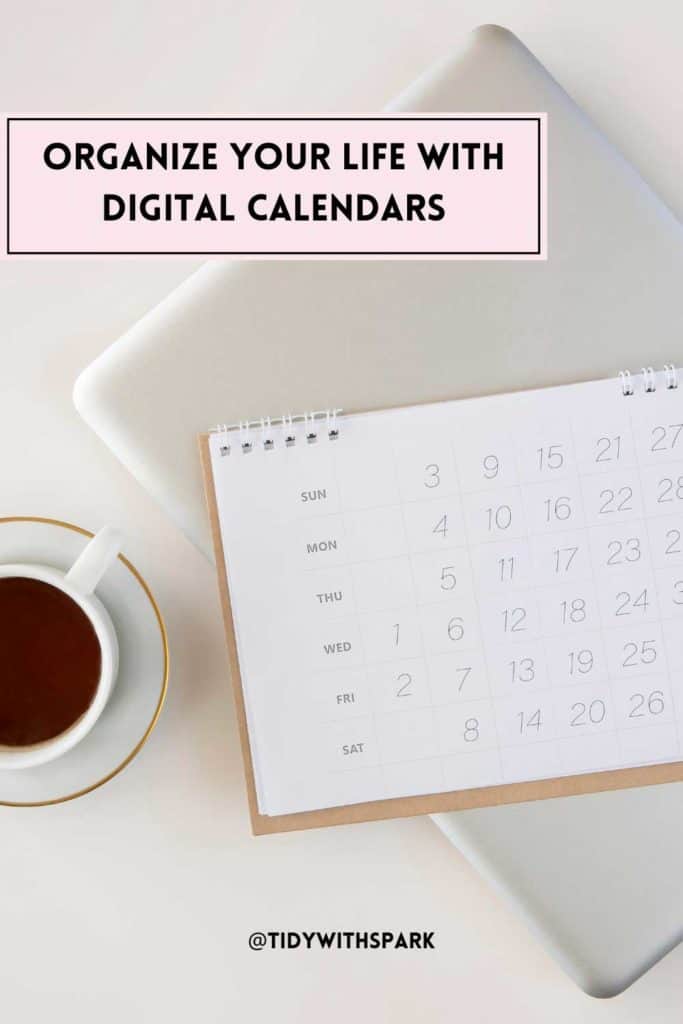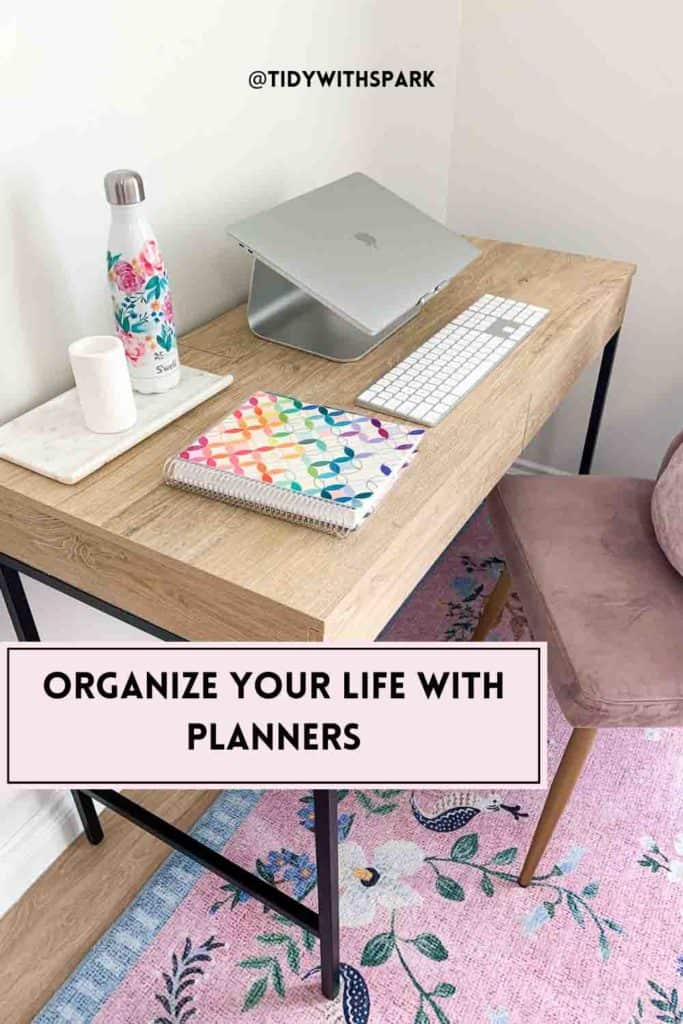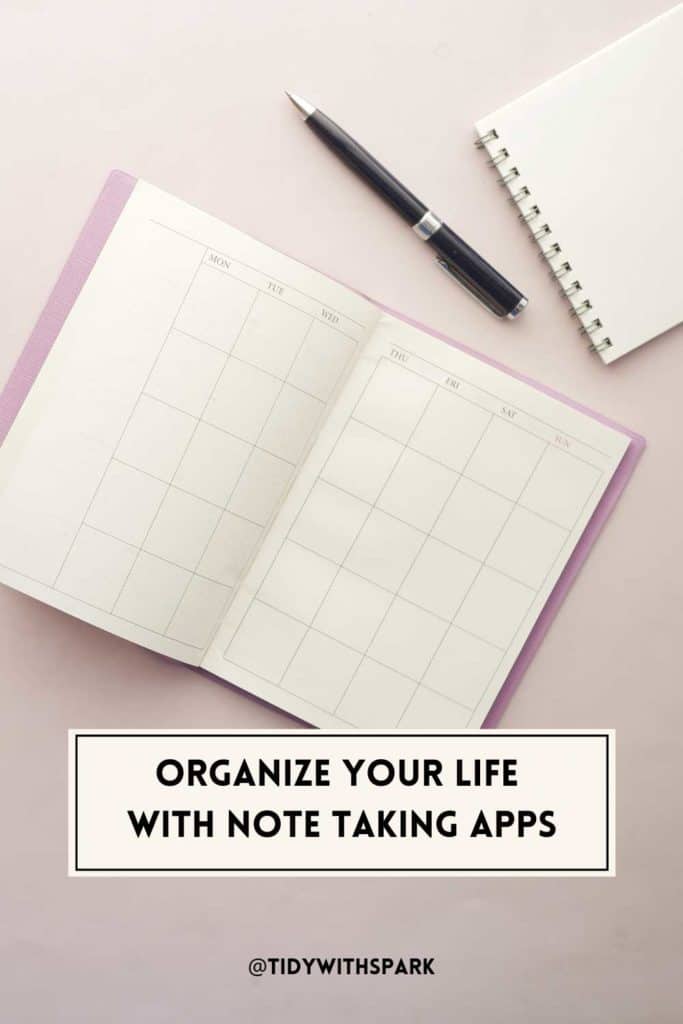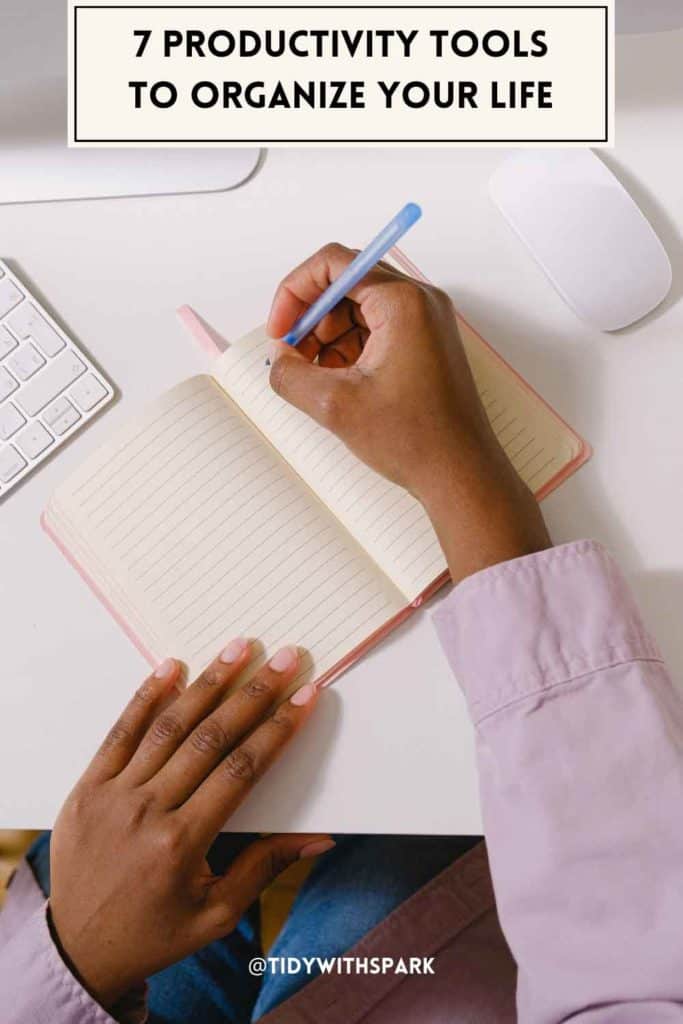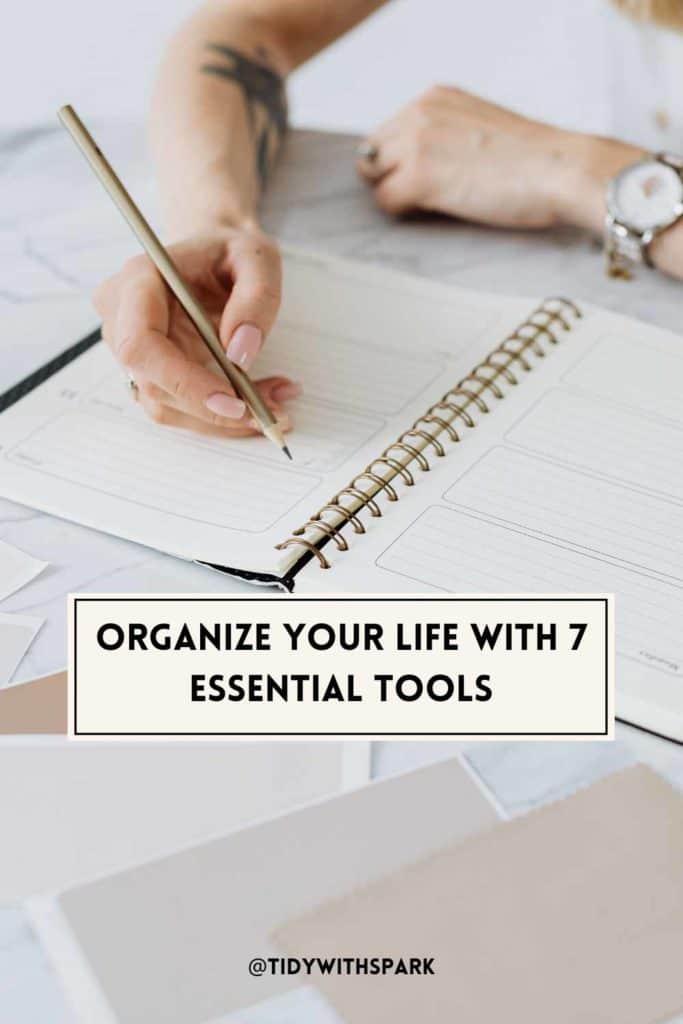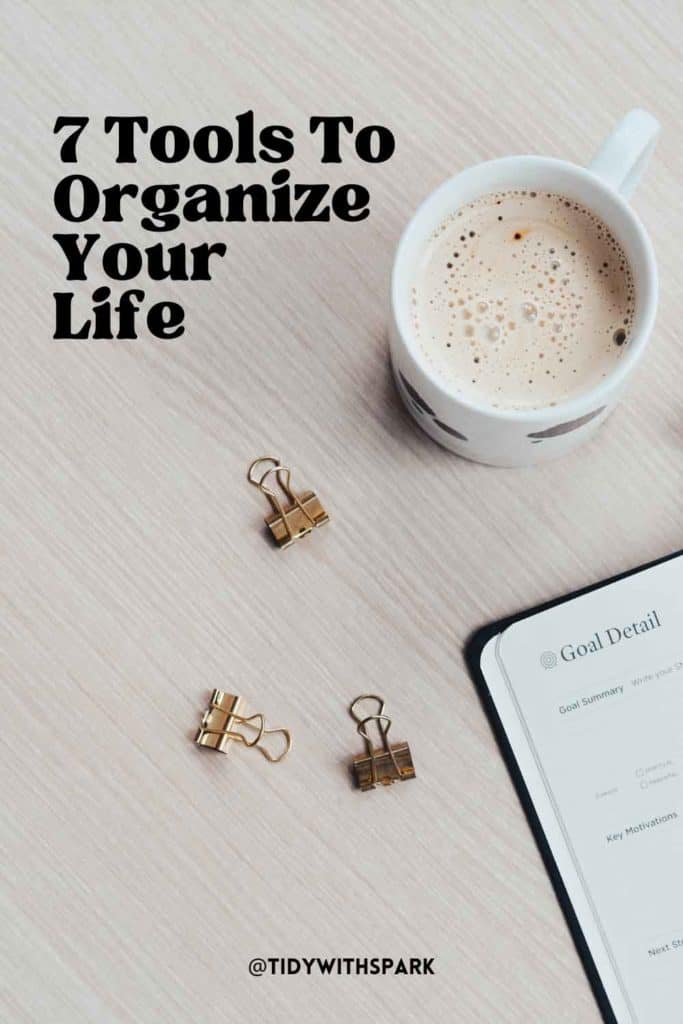7 Tools to Organize Your Life
- Planner
- Physical Planner
- Whiteboard or dry-erase board
- File cabinet or folder and document structure
- Digital Calendar
- Time Tracking App
- Note Taking App
- Task Manager
Looking to plan your entire year and get organized in 2023? Use this free 12-month printable calendar to get started on planning this year.
Also, if you’d like to learn my process for how I organize an entire year, watch this short video to motivate and inspire you to on planning the entire year.
Organization Tool #1: Planner
Benefits of Using a Planner
- Improved visibility: Having a physical planner allows you to easily see your schedule, tasks, and appointments at a glance, which can help you prioritize and stay on top of your responsibilities.
- Increased accountability: Seeing your tasks written down in a physical planner can make them feel more real and urgent, which can increase your motivation to get them done.
- Greater flexibility: Physical planners often allow you to customize and rearrange the layout and pages, which can make it easier to organize your schedule and tasks in a way that works for you.
- Better for memory retention: Many people find that writing things down helps them remember them better than just typing them out.
- Sense of accomplishment: Crossing out a task on a physical planner can give you a sense of accomplishment and satisfaction.
- Breaking digital dependence: Physical planners can help you disconnect from screens and technology, which can be beneficial for your mental and physical health.
Recommended Planners
2023 Planner Template Pack – Looking for a digital planner with over 70+ pages of done-for-you template pages? The new 2023 Planner Template Pack is fully customizable and delivers pages for habit tracking, goal setting, daily pages, time blocking page and includes a year end review process. Want to see what’s included in the planner? Watch a video showcasing all the pages in the 2023 Planner Template Pack here. Priced at $23.
Full Focus Planner – The Full Focus Planner is a paper bound planner that includes one quarter period. Each planner includes a section for goal setting, unmarked fill in calendars and unmarked daily pages. Each section of daily pages are followed by a weekly review to recap the week and make plans for the following week. Targeted towards business executives and entrepreneurs, the designs are limited in scope. Watch a Full Focus Planner review video here where I share my experiences with this planner. Prices range from $37 – $99.
Also watch the video below for a look at all the Full Focus Planner changes in 2023.
Additional Recommended Planners
Erin Condren Planner – With colorful and playful design, these paper planner are heavy duty spiral bound collections that delight those who seek a fun planner. The Erin Condren Planners serve a target market of students, teachers, and creatives. Prices start at $30+.
Silk & Sonder Planner – As a monthly membership planner, the Silk & Sonder Planner is visually delightful giving pages full of inspiration. The planner is decorated with soft floral designs and is spiral bound. I share my experience with using the planner in this Silk & Sonder Planner review video. Prices start at $25 for a monthly membership.
Bullet Journal– The Bullet Journal created by Ryder Carroll is a planner system that you can use with any blank notebook with dotted lines. Ryder has his own line of bullet journals for purchase and the pricing starts at $27.95.
Organization Tool #2: Whiteboard or Dry-Erase
Benefits of Using a Whiteboard or Dry-Erase Board
- Visibility: A whiteboard allows you to easily see all of your tasks and responsibilities in one place, which can help you prioritize and plan your day or week.
- Flexibility: Whiteboards can be easily modified, erased, and updated as needed, allowing you to make changes to your schedule or tasks as needed.
- Collaboration: Whiteboards can be used to share information and collaborate with others, making it a great tool for team projects or household tasks.
- Clarity: Writing tasks down on a whiteboard can help clarify your thoughts and make them more concrete, which can improve focus and productivity.
- Simplicity: Whiteboards are simple to use and don’t require any special technology or software, making them accessible to everyone.
- Reminder: Having a whiteboard in a visible place can serve as a constant reminder of what needs to be done, thus reducing the chances of forgetting tasks.
- Reduced waste: Using a whiteboard instead of paper reduces paper waste.
Recommended Whiteboards
- MC Squares – Reusable sticky notes and notepads offer an alternate to paper planners that is appealing to those who want to reduce their environmental imprint by reusing the boards thousands of times. MC Squares offers a wide range of products including sticky notes, wall calendars, and whiteboards.
- Whiteboard
- Whiteboard with stand
Organization Tool #3: Folder and Document Structure
Benefits of Using a Folder & Document Structure
- Improved efficiency: With a well-organized filing system, you can easily find and access the information you need, reducing the time and effort required to locate specific documents.
- Increased productivity: When you can quickly and easily find the information you need, you can spend more time working on important tasks and less time searching for documents.
- Better decision-making: Having all of the information you need in one place can help you make better decisions, whether it’s for work or personal projects.
- Reduced stress: Being organized can reduce stress and anxiety, as you’ll be able to find what you need without having to worry about misplacing important documents.
- Increased security: Having a filing system can help to protect your sensitive information, as it allows you to keep track of important documents and keep them in a safe place.
Organization Tool #4: Digital Calendar
Benefits of Using a Digital Calendar
- Accessibility: Digital calendars can be accessed from any device with internet connection, allowing you to easily view and update your schedule from anywhere.
- Synchronization: Many digital calendars, such as Google calendar, can be synced across multiple devices, ensuring that you always have the latest information at hand.
- Reminders: Digital calendars can automatically set reminders for upcoming events or tasks, reducing the chances of missing important deadlines.
- Collaboration: Digital calendars can be shared with others, allowing multiple people to view and edit the schedule, making it great for team projects or family coordination.
- Organization: Digital calendars provide an easy way to categorize and color code events and tasks, helping to keep your schedule organized.
- Historical records: Digital calendars maintain a record of past events and tasks, which can be useful for tracking progress and making plans for the future.
- Integration: Many digital calendars can integrate with other productivity tools, such as task managers and email, allowing for seamless organization.
- Mobility: Digital calendars can be accessed on the go, allowing you to stay on top of your schedule even when you’re away from your computer.
Recommended Digital Calendars
- Google Calendar
- Apple Calendar
- Microsoft Office Calendar
Organization Tool #5: Time Tracking App
Benefits of Using a Time Tracking App
- Time management: A time tracking app can help you understand how you’re spending your time, allowing you to identify and eliminate time-wasters and make better use of your time.
- Productivity: By tracking your time, you can set goals and measure your progress, which can help increase productivity and accomplish more in less time.
- Billing: A time tracking app can be useful for freelancers and small business owners for accurate invoicing and billing purposes.
- Prioritization: By tracking your time, you can prioritize your most important tasks and ensure that you’re making the best use of your time.
- Planning: A time tracking app can help you plan your day and week more effectively, by identifying patterns and routines in your work schedule.
- Accountability: By tracking your time, you can hold yourself accountable for meeting your goals and deadlines, which can help increase motivation and focus.
- Reporting: Many time tracking apps provide detailed reports and analytics that can help you understand your work habits, which can be useful for identifying areas for improvement.
- Integration: Many time tracking apps can integrate with other productivity tools, such as calendars, task managers, and project management software, allowing for seamless organization.
Recommended Time Tracking Apps
The time trackers that have worked for me are plain Google Sheets and Excel. I create simple templates and reuse them for different projects. If you’re not keen on creating your own template, here is a list of 7 Time Tracking Apps recommended by Forbes.
Organization Tool #6: Note Taking App
Benefits of Using a Digital Note Taking App
- Organization: A note-taking app can help you organize your thoughts, ideas, and information in one place, making it easier to find and reference later.
- Accessibility: Many note-taking apps can be accessed from multiple devices, allowing you to easily view and edit your notes from anywhere.
- Collaboration: Some note-taking apps allow for sharing and collaboration, making it great for group projects or sharing information with others.
- Clarity: Writing notes down in an app can help clarify your thoughts and make them more concrete, which can improve focus and productivity.
- Searchability: Many note-taking apps have built-in search functionality, allowing you to quickly find specific notes or information.
- Simplicity: Many note-taking apps are simple to use and don’t require any special technology or software, making them accessible to everyone.
- Backup: Many note-taking apps provide automatic backup and syncing, which can be useful for preventing data loss and keeping your notes safe.
- Integration: Many note-taking apps can integrate with other productivity tools, such as calendars, task managers, and project management software, allowing for seamless organization.
- Multi-format: Some note-taking apps allow you to take notes in various formats such as text, voice, images, and even videos.
Recommended Digital Note Taking Apps
- Evernote
- Notion
- Craft
- Obsidian
- Apple Notes
- OneNote
Organization Tool #7: Task Manager
Benefits of Using a Digital Task Management App
- Prioritization: A task manager can help you prioritize your tasks based on importance and deadlines, allowing you to focus on the most important tasks first.
- Time management: A task manager can help you manage your time more effectively by breaking down larger tasks into smaller, more manageable chunks.
- Productivity: By tracking your progress on tasks, you can set goals and measure your progress, which can help increase productivity and accomplish more in less time.
- Organization: A task manager can help you keep track of all your tasks, projects and deadlines in one place, making it easy to stay on top of your schedule.
- Collaboration: Many task managers have built-in collaboration features, allowing you to share tasks and projects with others, making it great for team projects or delegating tasks.
- Reminders: Many task managers offer reminder features, allowing you to set reminders for upcoming tasks or deadlines, reducing the chances of missing important dates.
- Customization: Many task managers offer customization options, allowing you to tailor the interface and features to your specific needs.
- Integration: Many task managers can integrate with other productivity tools, such as calendars, note-taking apps, and project management software, allowing for seamless organization.
- Reports: Some task managers provide detailed reports and analytics that can help you understand your work habits, which can be useful for identifying areas for improvement.
Recommended Digital Task Manager Apps
- Todoist
- Things
- Microsoft To Do
- Google Tasks
- TickTick
- Asana
- Trello
Conclusion
It is important to note that the effectiveness of using any of the 7 tools to organize your life depends on how well you use it, how well you stick to it, and how well you set reminders and alerts.
One tool does not fit all and I would not be so quick to abandon one in favor of another. Give these 7 tools to organize your life a real shot, investing the time an energy to learn and use the tool first so that you can identify how it works for you and where any deficiencies lie, if any.
Please note: This post contains affiliate links and I may earn a small commission if you choose to purchase something with the links.
Southern California based Professional Organizer, Sandy Park, owner and founder of Tidy with SPARK shares her joy of organization with her clients.
She serves clients in Orange County as well as the hundreds of thousands of followers on her combined social media platforms.
Connect with Sandy through her website or by connecting through her social channels.
